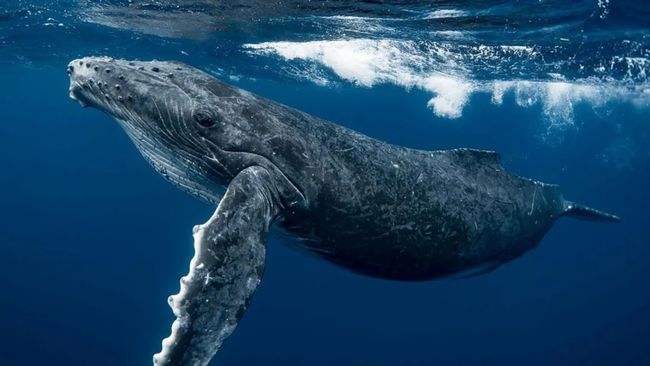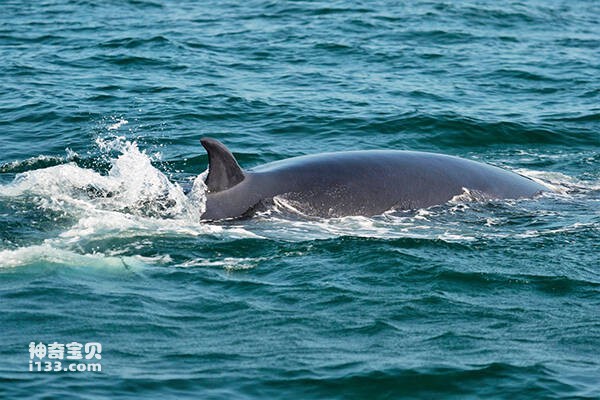Balaenoptera brydei
IUCN
LCBasic Information
Scientific classification
- name:Balaenoptera brydei
- Scientific Name:Balaenoptera brydei,Bryde's whale,Anchovy, Pseudomonas auratus
- Outline:Cetacea
- Family:Mysticeti
Vital signs
- length:10-16.5m
- Weight:10-18T
- lifetime:50-70
Feature
The most distinctive feature is the three parallel longitudinal ridges on the head
Distribution and Habitat
Origin (sea area): American Samoa, Angola, Anguilla, Antigua and Barbuda, Argentina, Aruba, Australia, Bahamas, Bahrain, Bangladesh, Barbados, Belize, Benin, Bermuda, Bonaire, Brazil, Cambodia, Cameroon, Cape Verde, Cayman Islands, Chile, China, Cocos Island, Colombia, Congo (Kinshasa), Congo (Brazzaville), Cook Islands, Costa Rica, Côte d'Ivoire, Cuba, Curacao, Djibouti, Dominican Republic , Ecuador, El Salvador, Equatorial Guinea, Eritrea, Fiji, French Guiana, French Polynesia, Gabon, Gambia, Ghana, Gibraltar, Grenada, Guadeloupe, Guam, Guatemala, Guinea, Guinea-Bissau, Guyana, Haiti, Honduras, India, Indonesia, Iran, Iraq, Jamaica, Japan, Kenya, Kiribati, North Korea, South Korea, Kuwait, Liberia, Madagascar, Malaysia, Maldives, Marshall Islands , Martinique, Mauritania, Mauritius, Mexico, Micronesia, Morocco, Mozambique, Myanmar, Namibia, Nauru, New Caledonia, New Zealand, Nicaragua, Nigeria, Niue, Northern Mariana Islands, Oman, Pakistan, Palau, Panama, Papua New Guinea, Peru
Appearance
The Bryde's whale is larger than the smaller Bryde's whale, with a sexually mature body length of at least 11.2m for males and at least 11.7m for females. The maximum body length of males is 14.6m and that of females is 15.6m. The appearance of the Bryde's whale is similar to that of the smaller Bryde's whale. There are three raised ridges on the back of the head, from the tip of the snout to the blowhole, one in the middle and one on each side. The lateral ridges are located between the midline and the lateral edge of the back of the head, about 1~2cm high, and become shallow grooves at the rear end. There are several hairs on each ridge, and there are two rows of hairs at the front of the lower jaw. The back of the body is usually blue-black, and the belly is white or light yellow. There is a dark blue-gray area near the throat that extends to the side and backward to the flippers. Many individuals have a gray stripe on the abdomen that crosses just in front of th
Details
Bryde's whale, also known as Bryde's whale in English, has no subspecies and is the only baleen whale that lives in tropical or subtropical areas all year round.

Bryde's whale is very similar to Sei whale, the main difference is that Sei whale has a ridge on each side of the central ridge from the front end of the upper collar to the blowhole; Bryde's whale has a fold from the umbilicus to the genital opening; the spinous processes of the lumbar vertebrae are all tilted backwards.
Bryde's whales do not form large groups. Bryde's whales in the North Pacific usually swim alone or in groups of 2-3, with 12 being the largest group. Their blowouts are about 3-4 meters high. They usually take 4-5 breaths before making a long dive. Sometimes they exhale underwater and then come out of the water, with almost no blowouts. It is rare to see them raise their tails before diving. The usual swimming speed is about 2-7 km/h, and can reach 20-25 km/h at high speeds. They can dive to a depth of 300 meters, and Bryde's whales are often seen jumping out of the water.

Bryde's whales feed mainly on pelagic schooling fish such as sardines, eels, herrings, and mackerel. They also eat small crustaceans such as krill and copepods, as well as cephalopods and pelagic red crabs.
In the East China Sea off the coast of Kochi Prefecture, Japan, female whales are sometimes seen with their calves in the spring, but this does not prove that they give birth there. In the local populations in the ocean, the peak of mating and calving is in winter. The gestation period of the local population in South Africa is about 11 months, and the newborn whale is about 4 meters long. The lactation period is about 6 months, and the body length of the whale is about 7 meters when it is weaned. Males of the local population in the northwest Pacific reach sexual maturity at 11~11.4m, and females at 11.6~11.8m.
On March 7, 2022, a Bryde's whale appeared near the marine surveillance law enforcement ship in the Beibu Gulf, swimming freely and reluctant to leave for a long time. On March 8, about 5-7 Bryde's whales jumped and "played" around the marine surveillance law enforcement ship within 8-10 meters from the ship. According to the Guangxi Beibu Gulf Marine Mammal Joint Research Group, which is composed of the Guangxi Academy of Sciences, the Institute of Hydrobiology of the Chinese Academy of Sciences, and Beibu Gulf University, 32 Bryde's whales have been identified in this area, and they are all in good health. In September 2022, the first traces of the national first-class protected animal Bryde's whale were found in the waters near Baixugong Reef in Fangchenggang, Guangxi.

Listed in Appendix II of the Convention on the Conservation of Migratory Species of Wild Animals (CMS).
Listed in Appendix I of the Convention on International Trade in Endangered Species of Wild Fauna and Flora (CITES).
Listed in China's National Key Protected Wildlife List: National Class II Protected Animal (effective December 10, 1988, Cetacean*Other Cetaceans)
Listed in the IUCN Red List of Threatened Species: Data Deficient (DD), assessed in 2008.
Listed in the Class I of China's National Key Protected Wildlife List.
Protect wild animals and stop eating game.
Maintaining ecological balance is everyone's responsibility!








